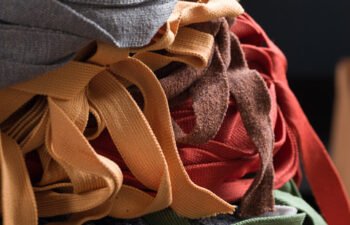Over the past year and a bit, many people have returned to crafting. We all have a bit more time, and for many, working on a hand-made piece provides a mental break from anxiety. You can order anything you need from Amazon – just tested the theory, you can even order a kitchen sink!
And although I personally am not a knitter, my 93-year-old mother is still knitting – projects are for her 2-year-old great-grandson. Even with vision limitations, the muscle memory is there. The results are perfect, albeit with a few un-ravels to retrieve a dropped stitch.
We’ve been “here” before in history. Women were encouraged to knit socks and hats for soldiers starting as far back as the Civil War. “Knitting for Victory” is a phrase born in during World War II. In the USA, everyone from Eleanor Roosevelt, the “knitter-in-chief”, to anyone who could pick up a pair of knitting needles got to work. The cover story of Life magazine in November 1941, explained “how to knit”, with basic instructions and a pattern for a simple vest. According to Paula Becker, “Knitting provided warmth and comfort for the soldier and therapeutic distraction for the knitter”. I think this applies in our current crisis.
In Europe during the war, knitters rode the trains, seemingly working on a garment. In reality, they were knitting codes into pieces that could easily be passed on under the guise of a scarf. They were counting trains as they crisscrossed the countryside with supplies and prisoners, noting within knit, purl and dropped stitches. Others used a strand of silk, knotted with messages in Morse code. This strand would be knit into a larger piece of heavier yarns, and this was then unraveled to reveal the message in the silk yarn.
According to the New York Times, “if you google the two words “knitting” and “pandemic” together, you will get about 23 million hits.” Wow, where to start? Here are a few interesting options if you choose to join in!
If you are looking for a project, check out We Are Knitters www.weareknitters.com , a company that started in 2011, but was ideally suited to social media marketing and the limitations imposed by the pandemic. A package arrives with the instructions, the needles and the yarn – you pick the pattern and the colors and the size. They post instructions and tutorials online, so you really can figure this out. Their original customers were mostly women 25-40 years old who wanted a new hobby. Now their project ideas have turned into a trendy habit, considered 21st century yoga by some. You can check them out on Instagram #weareknitters. Along the way, they developed a community, and we could all use more of this in our life right now – reconnecting in person with your virtual community is a great joy!
Or when you really want to be an adventuring crafter, try www.fibreshare.org. It is such a unique experience. You are partnered with a crafter from anywhere in the world, based on your interest in weaving, crocheting, or macrame. You create a box of supplies, patterns, etc., for them, and they do the same for you. In this process, a creative community is also formed – brilliant! A 21st century version of a “sewing circle’ from our grandmother’s days, done virtually.
At Studio Twist, we are quite enamored with knitting! The combination of the yarns and the constructions that have been developed by our team has changed the functionality of “top of bed” for hotel, cruise and senior living properties. We’ve had a part in converting this centuries old craft into a comforting, comfortable textiles that withstand the rigors and standards required by the industry.
So, as we emerge from the pandemic, I personally hope that we all manage to hang on to the better parts of this past year. Maybe you have a renewed interest in gardening, or have “upped” your cooking game, or adopted a dog, or caught up with all the books you have collected in your library. Or perhaps you rededicated yourself to some healthy habits with something as simple as a walk around your neighborhood. Let’s hope the lessons learned will bring us all to a “better place”, whatever that means to each one of us.


